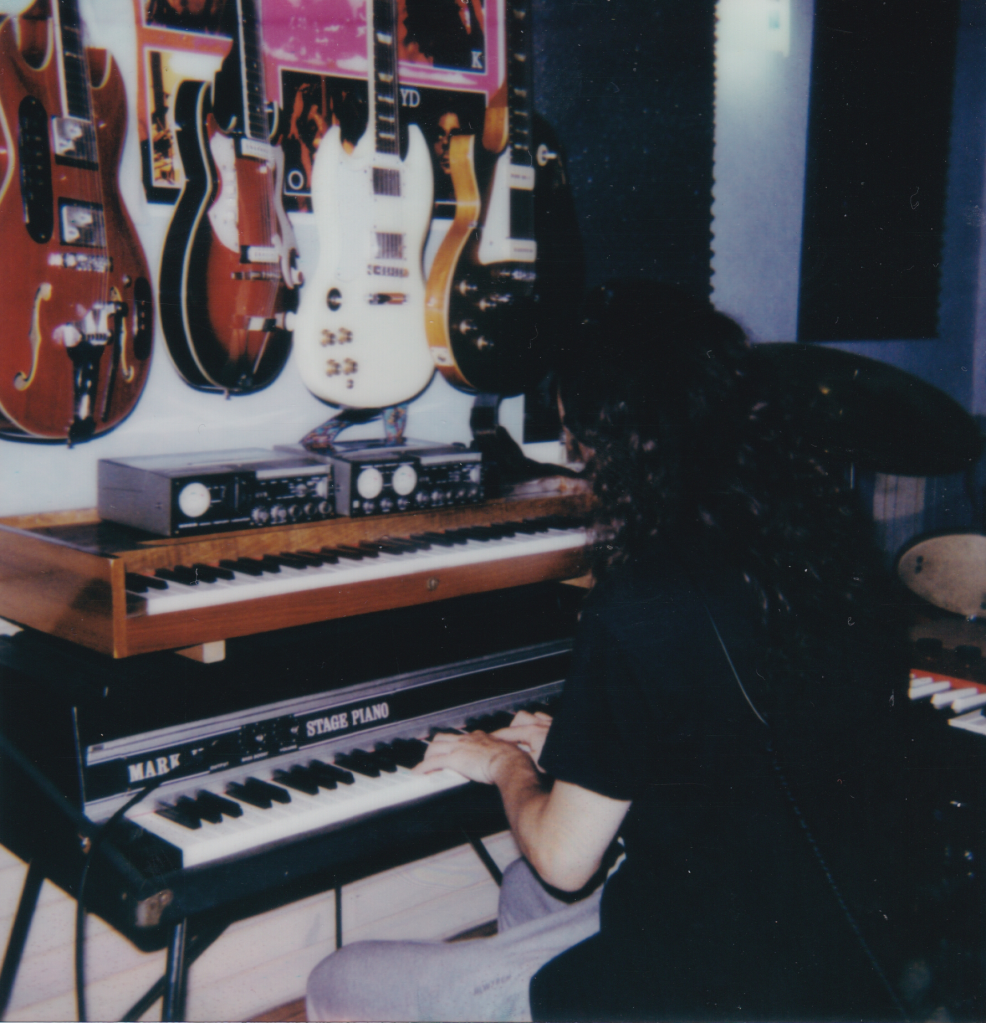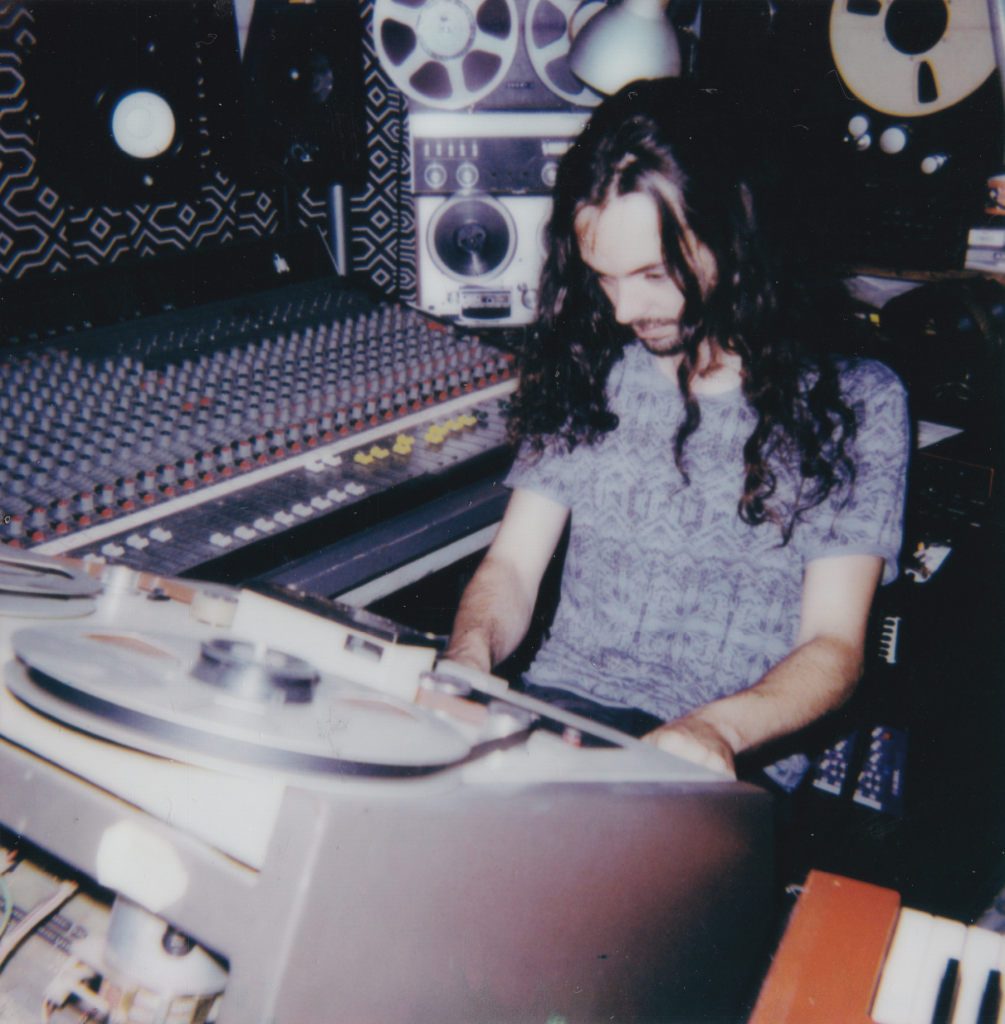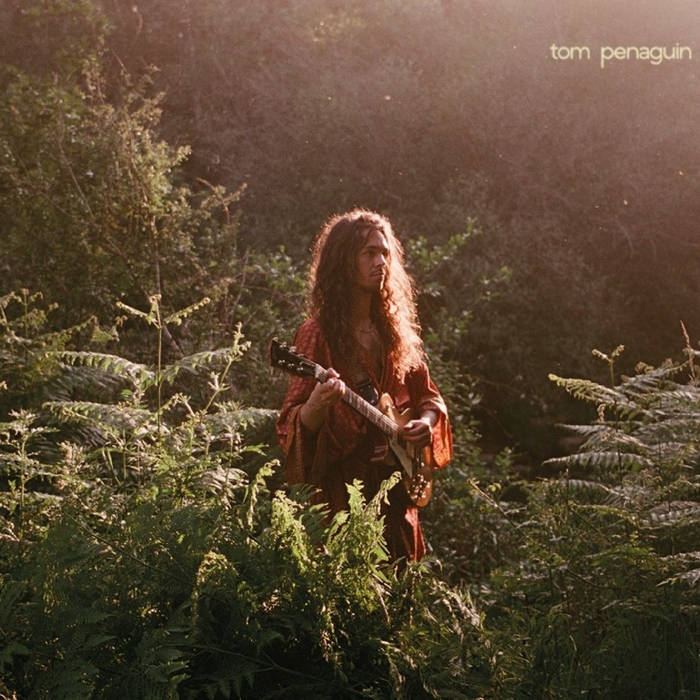for part 1 of this interview go here

The album Tom Penaguin is an entirely instrumental project of 5 pieces, bringing keyboards much more to the fore than Tom’s previously heard material on Youtube videos and is an album of complex, often introspective composition. There’s a lightness of touch in place, almost an instrumental whimsy which reminds me Hatfield and the North and Gilgamesh, but there are also overt references to other Canterbury bands in other places, most specifically on the extraordinary Aborted Long Piece No 2. The latter sits slightly incongruously in the centre of the album, a brief slice of madness which progresses from the faux-classical organ sounds (so Egg-like) to a preposterously crazed minute or so of aural battery, mixing endless unreasonable timing changes with relentless fuzz effects to organ and bass. Tom, however, overall sees a closer alignment to National Health:
I wanted (the album) to feel like it would fit amidst the Canterbury Scene of the Seventies, and the album’s structure is reminiscent of a National Health album where the theme from the beginning is repeated at the end. That’s the kind of coherence I was looking for, and I think it gives the album an entry and exit point.
I shaped the whole album to something similar to what they did back then, with the slow intro, a “main theme” used at the beginning and at the very end of the album, things like that. I think it’s one of the best way to write a coherent album, it gives the listener some time to get into the whole thing, and allows them to go back to “real life” smoothly.
Egg is also a strong influence, I think of it as a great writing tool/skill set. When I’m trying things on keyboards, I often end up with a small pattern that I’m trying to either break or to play in the most difficult way possible. The rest of the instrumentation needs to leave space for it though, otherwise there’d be too much information at a given time, so it ends up with drum, bass, and 2 keyboards max playing intricate patterns, which sounds a bit like Egg, but I haven’t found an alternative to this result yet (and I’m quite ok with that).

So how did the ‘Canterbury’ project come about?
This all comes from a 16 track tape recorder I bought in 2020, I wanted to try what could be done with analogue gear only, including recording and mixing, and I came up with Housefly Leg. It was a real pain to record it alone without any computer or digital stuff… then I bought a Fender Rhodes, a keyboard I was dreaming about for quite a while, and I realised that I was ready and set to try to record the Canterbury album I wanted to do for so long. It took me quite a while to write the B side, a lot of trial and error, but I did it without digging too much into my old compositions, as I’ve evolved a lot musically since. So almost everything is fresh! I re-recorded Housefly Leg, the whole album was recorded using a computer only as a tape recorder with very few digital effects, everything else was done with analogue gear from mixing desk to spring reverb unit.
I finished it in mid 2023, then went to the Black Box studio (where we recorded our last Djiin album) to have it mastered. Then, Maureen, my girlfriend and the photographer responsible for the design of the whole album, sent a message to Ryan from Zopp. We talked a lot, he taught me a lot of things on what to expect as a solo musician in the prog music industry, and I began contacting labels that I thought could be interested, along bands that I thought were in the same musical realms as myself.
Dario from Homunculus Res gave me the lead for àMARXE, and it’s Rafa that was willing to take the most risks regarding the album. I’m glad I trusted him, his work is flawless and we are on the same wavelength, plus I get to be published by a label that also have work from Juzz, Amoeba Split, Love Beat Oracle and Rascal Reporters!

I noted other semi-recognisable approaches within the album: attempts to carve out anthemic themes akin to ‘Tenemos Roads’ on ‘Housefly Leg’, which is followed by a wonderfully effusive bass solo, the latest in a tradition stretching back all the way to Caravan’s ‘For Richard’ via National Health’s ‘Borogroves’. I also noticed that the dual guitar/keyboard lines remind me in places of Khan, as well as Tom’s work elsewhere, particularly on those early Youtube videos being reminiscent of Steve Hillage, although Tom is ambivalent in terms of his guitar influences..
I never really tried bass solos before, I came up with the one from housefly leg on the spot. The chord sequence is very open, so for each chord there is 4 or 5 different bass notes that can give a different meaning to the thing. Guitar-wise I’ve never been too influenced by the Canterbury scene so it’s hard for me to pinpoint a guitar player. I’ve been mostly influenced by Zappa, McLaughlin, Akkerman and Holdsworth, but I sound like none of them because I’m only interested in a fragment of their skillset.
So what of Tom’s other work? His Youtube channel is a pastiche of original compositions, some with clear Canterbury reference points, which are detailed below, others not. There are also medleys of material from bands such as King Crimson, Zappa, Focus and Pink Floyd, all in their own right feats of performance and compilation, as Tom synchronises his talents on a number of instruments. Tom outlines the method:
The process is quite similar between the videos and the album. For the album I wrote everything on computer using virtual instruments. Once I have something that seems ok, I try to play live drums over it. If I’m having fun playing drums, I’ll keep what I have written, if not I’ll erase things and write stuff again. Once I’m pleased with what I wrote, I can begin laying down the drum tracks over the virtual instruments, and then I erase the virtual instruments and I record the real instruments. Once everything is done I’ll take my time to record the solo parts.
I picked out a few choice videos for Tom to comment on – links are also included here. Galaxy on Tape, for example, has a curious, almost educational introduction as Tom takes us through the process of creating a tape loop, before launching into a joyful blissed out sun-god guitar solo.
Galaxy on Tape: I think I had Gong in mind at the time. I wanted to have a synth loop somehow, but didn’t have any synth at the time and I didn’t want to do it digitally. That was a good excuse to do a tape collage loop I think! The loop was then sped up and blended with an organ into a wah pedal and a Fulltone Octafuzz. The wah allowed me to imitate a VCF while the Octafuzz, being an analog octave up pedal that don’t like being fed 2 notes at once, allowed me to emulate a ring modulator. On Galaxy on Tape 2 I had just bought the 8 track tape recorder with its matching mixing desk that you see in the video and I wanted to try it before going into something more challenging musically. I think it’s still influenced by Gong!
Tom’s version of ‘Teeth’ is somewhat impressionistic, messy interpretations of a single riff from the original Soft Machine track, whilst ‘Master Builder’ is a relatively faithful version of Gong’s seminal ‘Om Riff’.
Tom: ‘For Teeth/Master Builder: honestly, like most of the other covers I did, I just wanted to play that song, and I videotaped it to put in on Youtube.
Typewriter in D: this is a blend between me buying a cheap typewriter, and discovering Kamasi Washington.
There are also a number of additional solo projects Tom has published on Bandcamp, often semi-anonymised, such as Captain Blind Chameleon, which in eschewing keyboards AND featuring multi-tracked vocals is an instrumental diversion, stripped down and heavy. It remains perversely possibly my favourite material amongst his work, despite it being aeons away from his ‘debut’ solo album.

(With) Captain Blind Chameleon I wanted to see how far I could push the concept of very gentle vocal harmonies over a very riff-oriented stoner instrumentation. It was also the perfect excuse to blend prog ideas to a genre that can sound a bit dull when it is too centered on the heavy, bold sound and not enough on the musical content. I have a half written Captain Blind Chameleon vol.2, but it’s more kraut-stoner, there’s no lyrics yet, and I’m not in the mood to work on it currently…
Tom also has had membership, on a more equal footing, with other musicians, such as his first band The Moonrains (who covered pop prog material by the likes of ELO and the Beatles) but more recently his current work with Djiin, which whom is he currently on tour with in Germany.
I had a few projects that never went that far until I joined Djiin in 2017. I joined the band as a bassist, since the one they had previously suddenly went to Poland. I switched to guitar a few months later. Then Allan (Djiin’s drummer) offered me to join Orgöne, a band that he had recently joined, as a keyboard player.
I’m still currently playing guitar in Djiin, but I left Orgöne a few years ago because I thought we were not playing live as much as we should have, and we were a bit stuck while writing what would have been the second album. We recorded it but quickly scrapped everything because we thought about it too much I think. 2 years ago I tried to build my own band, Pramanta, oriented into prog and fusion. We had quite a bit of viable material but I was struggling with the power trio formula, and Claudia, the bassist, left to go back to Spain, so that band was over. I’m trying again with the same drummer, Baptiste, and this time we’ll try to find a keyboard player. We’re currently writing stuff, we just need to find the people that would enjoy playing that.

Finally, given the excitement about his debut solo album, what are the plans for the future?
I’m writing the next album! But there might be something related before that, I don’t want to say too much about it for now.
Thanks to Tom for being so generous with his time, and as eloquent an interviewee as he is a musician!
Tom Penaguin is available on AMarxe records here:
part one of this interview is here
look out for further interviews in this series with the likes of Dario d’Alessandro (Homunculus Res), James Stain (Rascal Reporters), Carla Diratz (Diratz), Dave Newhouse (The Muffins), Eva Muntada (Magick Brother Mystic Sister), Bjorn Klakegg (Needlepoint), Ryan Stevenson (Zopp), Alberto Villaroya (Ameoba Split)

One thought on “Canterbury 2.1 – Tom Penaguin (part 2)”